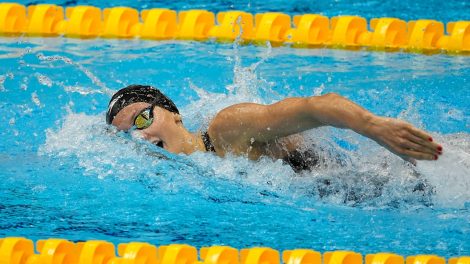When Sarah Pavan left Canada’s national indoor volleyball team in 2013 to pursue a new life on the beach, she had to completely overhaul her game. She was one of the top players in the world, but Canada hadn’t had a women’s indoor volleyball team make the Olympics since 1996, so Pavan opted for the beach in hopes of accomplishing on the sand what she’d been unable to on the hardcourt.
The six-foot-five lefty had no idea just how difficult the switch would be. Appearances aside, there is a huge difference between playing the sport with six people on a court in a contained environment and playing it as a pair in an outdoor sandpit, facing the elements along with your opponents.
But her new teammate, Heather Bansley, was a beach veteran. Bansley had narrowly missed out on an opportunity to represent Canada at the Olympics in 2012, when she and her then-teammate Liz Maloney lost a playoff with Canada’s Annie Martin and Marie-Andrée Lessard for Canada’s only berth in London. Stuck watching the Games on Television, Bansley new she’d have to improve to make her dream a reality in 2016.
Teaming up with Pavan was a key step in that direction. Over the past four seasons, the pair has worked together not only to qualify for the Olympics, but to turn themselves into favourites to reach the podium. They’re ranked fifth in the world heading to Rio, where they play their first match on Sunday.
But there were a lot of growing pains along the way.
“There were definitely times at the beginning when I thought, ‘What the heck am I doing?’” says Pavan, who grew frustrated having to re-learn basic skills she’d been executing in the indoor game for most of her life. “But I knew that if I kept working hard every single day I would see an improvement.”
Perfect passing was a necessity, and both had to be accurate in the blazing sun or facing unpredictable breezes. Even jumping was different, demanding a switch from the forward leap possible on the indoor court to the straight up-and-down motion required to gain height off shifting sands. Pavan also had to adapt to the less-predictable play generated by two people trying to cover a court. That unpredictability placed a heavy emphasis on constant and effective communication. “Learning how to share information and managing emotions is huge,” says Bansley. “There’s only two of you—it’s a relationship.”
Pavan is an intense competitor who shows her frustration on the court, while Bansley is calmer. “We compliment each other that way,” Pavan says. “You have to be aware of what your partner needs, or doesn’t need. It’s much more relationship driven.”
The pair are among the best defensive duo in the world, earning many of their points with effective blocking and coverage. But they’ve focused on implementing creative attacks and becoming more consistent and effective on sideout opportunities.
After traveling the world together for four seasons, Bansley and Pavan are much removed from the frustration of watching other Canadian athletes compete at the London Olympics. It took some major changes, but now they’re in Rio—Olympic rookies, together—with a legitimate opportunity to surpass the goals that seemed out of reach just a few years back.
“Now, I don’t just want to go,” Pavan says. “I want to go—and win.”










